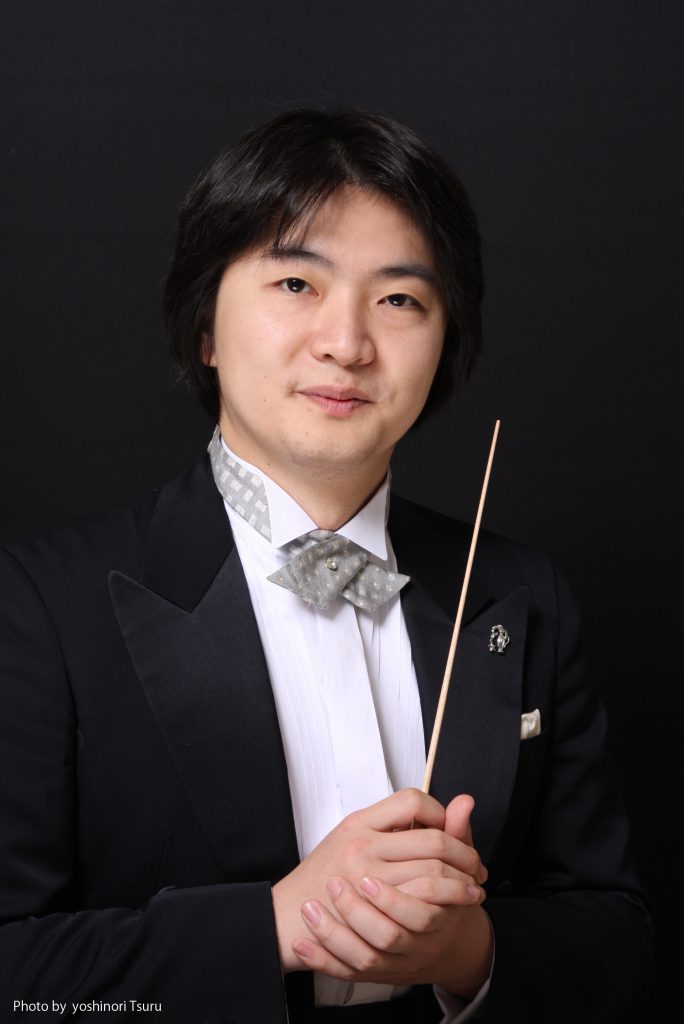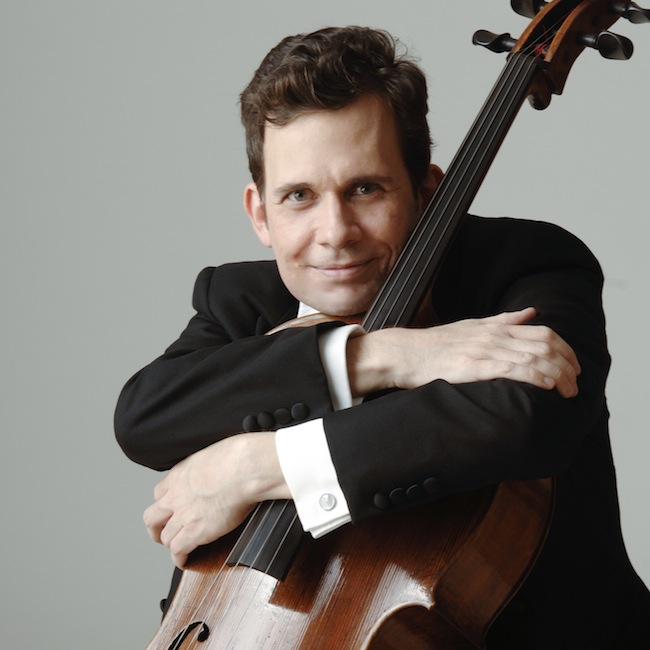Houston Symphony’s Spanish program features revived Cello Concerto

Kazuki Yamada conducted the Houston Symphony Thursday night.
Guest conductor Kazuki Yamada made his Houston Symphony debut Thursday evening at Jones Hall. While the concert was titled “Falla & España,” a resurrected concerto was the main point of interest.
Houston Symphony principal cellist Brinton Averil Smith was soloist for Mario Castelnuovo-Tedesco’s Cello Concerto. The Italian composer is best known for nearly a hundred works for solo guitar, and as composer for over two hundred Hollywood movies. He wrote concertos for Jascha Heifetz and Andres Segovia.
Castelnuovo-Tedesco also wrote a Cello Concerto for the great Gregor Piatigorsky that the dedicatee premiered in 1935 with the New York Philharmonic conducted by Arturo Toscanini. Piatigorsky had sole rights, and after a few more performances it fell from sight and sound. Tonight was the belated Texas premiere, and is the result of a decades-long quest by Smith.
Brinton Smith has established himself as a virtuoso cellist with few technical equals. He is also a proponent of old-school string playing such as that of Piatigorsky and Heifetz. He is not afraid to use expressive vibrato and an occasional portamento, or slide, to enhance a melodic line. Those qualities make Smith the ideal proponent of this concerto, which harkens back to the Golden Age of movie music and tests the limits of cello technique.

Brinton Averil Smith. Photo: Sandy Lankford
The first movement is evocative of Hollywood music for Biblical epics, and is also somewhat reminiscent of Ernest Bloch’s Schelomo. The cello begins alone with a somber theme; the music alternates between unaccompanied passages and rich orchestrations that showcase Castelnuovo-Tedesco’s command of the orchestra. There is an elaborate solo cadenza that includes difficult double-stops and instrumental gymnastics. Unfortunately, that important passage was accompanied by a cellphone’s prolonged ringing.
The playful second movement, written mostly in the cello’s upper register, with a cadenza accompanied by a celesta and timpani. After a short orchestral opening to the third movement, the cello plays an extensive solo that includes more double-stops and bow gymnastics, all expertly played by Smith.
The Houston Symphony provided a finely played accompaniment. While Yamada was clear and efficient in his conducting, he too often swamped the soloist with an overloud orchestra and should have better adjusted balancing and dynamics.
The performance was rewarded with extended applause for Smith, who in turn rewarded the audience with an encore, Sea Murmurs. Arranged by Heifetz for violin and piano after a piece by Castelnuovo-Tedesco, Smith performed a transcription for cello. Since no piano was onstage, Houston Symphony keyboardist Scott Holshouser played the accompaniment on celesta. The result was sheer magic with Smith’s burnished cello tone and exquisite Heifetz-styled shadings.
The concert opened with Emmanuel Chabrier’s España. The popular tone poem features staccato guitar-like sounds, a playful bassoon melody, a marcato trombone theme, and percussion punctuations. Conductor Yamada led a rhythmically straightforward interpretation, and the Houston Symphony made child’s play of the tricky technical demands of the score.
Manuel de Falla’s ballet, El Sombrero de Tres Picos (The Three-Cornered Hat), was heard after intermission. It was commissioned by the famed Russian impresario Sergei Diaghilev, who also presented Igor Stravinsky’s The Rite of Spring. The ballet is based on El Corregidor y la molinera (The Magistrate and the Miller’s Wife), and incorporates the dances and vocal music of de Falla’s native Spain in a comic romantic tale.
Yamada navigated the multi-faceted score with efficiency and ease. His economy of motion appeared focused on clarity of thought, which kept the orchestra well unified throughout.
Two sad Andalusion folk songs in the cante jondo (deep song) style are the expressive high points of the generally light-hearted ballet. Mezzo-soprano Sofia Selowsky sang the first song from the left rear of the stage and the second from the rear balcony. Her voice easily projected throughout the hall, sounding like chocolate syrup topping de Falla’s sonically rich orchestration.
As with many early 20th-century works, the woodwinds have prominent roles. The bassoon was played with humor and style by Rian Craypo, and several other excellent wind soloists and prominent percussion parts added color and panache. The Houston Symphony was in top form, performing with impeccable balance and ensemble.
The program will be repeated 8 p.m. Friday and Saturday. houstonsymphony.org



Posted Apr 14, 2017 at 5:50 pm by George John
From row F I thankfully didn’t hear the cell phone. I fully agree the orchestra was at times louder than I would have liked. The cello part is beyond belief difficult, but Brinton Smith met the challenge and then some. I hope Naxos will release this. The spot microphone will help fill in the detail that I strained to hear but sometimes missed. The orchestra play magnificently throughout. What a great, great orchestra! And, the combination of cello and celesta in the encore was uniquely special.
Posted Apr 16, 2017 at 9:44 am by Classical Fan
One wonders if Castenuovo-Tedesco ever had a chance to hear how his concerto sounded in an actual performance. Had he done so, my guess is that he’d have made some revisions to the score to help bring out the cello line in the first movement. Tweaking their original scores is something many composers do; how many iterations did Tchaikovsky prepare of his symphonies and tone poems? At least three of the “Romeo & Juliet,” just as one example …